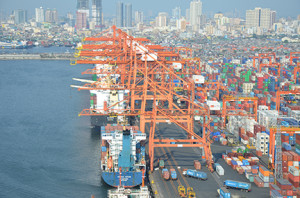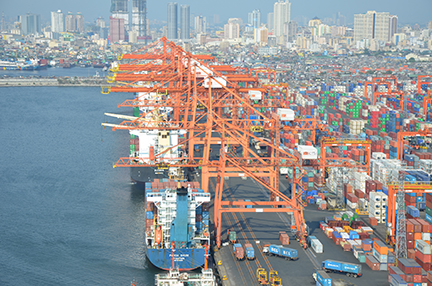Truck shortage, full container yards obstacles to declogging efforts

Decongestion of Manila ports within two weeks is just “not possible”, truckers’ groups said in reaction to government pronouncements of an end to port congestion within that period as a result of various “drastic” soon-to-be implemented measures and assuming cooperation from importers and truckers.
Officials of the Confederation of Truckers Association of the Philippines (CTAP) and Integrated North Harbor Truckers Association (INHTA) told PortCalls port decongestion in two weeks would be impossible, even if government implements the proposed “last mile” route for cargo trucks on two consecutive Sundays and Mondays.
The last mile refers to the final leg of transportation from a transport hub (ports, for instance) to a specified destination. In the trucking industry, the last mile is taken to mean movement of cargo trucks from ports to warehouses.
The adoption of the last mile is one of the measures eyed by government to ensure the pull out of 16,000 containers from Manila ports. The others are transferring Customs-cleared overstaying boxes in Manila ports to Subic and Batangas ports starting September 8; and fining, beginning October 1, owners of Customs-cleared overstaying containers P5,000 per day beyond the free five-day storage period.
CTAP president Ruperto Bayocot said it is “not possible for operations of Manila ports to normalize in two weeks (or) even two months” especially with the current port situation.
He told PortCalls not only is there a shortage of trucks due to longer turnaround as a result of the Manila truck ban, but there is also a shortage of truck drivers. The tough conditions drivers face as a result of being cooped up too long inside their vehicles have pushed some to driving taxi cabs instead. There have also been reports that many drivers now suffer from health issues.
Overcapacity in container yards is another roadblock to quick normalization of port conditions. Teodorico Gervacio, president of INHTA, told PortCalls the return of empty containers “takes time” since most yards are full, even the newly opened ones outside Metro Manila. Despite willingness to transport empty containers from ports, truck owners said they have difficulty finding yards that would take in the boxes. Truckers claim it now takes about two weeks to return empties precisely due to lack of space in yards.
There are 12,145 trucks identified to be servicing the ports of Manila. The Philippine Ports Authority earlier said there are 4,200 truck movements in the ports per day. But truckers claim truck turnaround is now at 72 hours, putting in question the actual number of truck movements per day.
Cabinet Secretary Jose Rene Almendras early in the week said Manila ports will be decongested of 16,000 containers in two weeks following “drastic” measures government is implementing.
“We’ve computed it. We know exactly what volume of cargo needs to be moved out,” he told reporters. “And if only we (could) move out the same volume of containers or TEUs (20-foot equivalent units) on a Saturday night, on a Sunday, and on Monday morning, in two weekends we will be able to declog the ports.”
There has been much push from both government and private industry associations for importers to pull out their cargoes on weekends, but to little avail. PortCalls sources from the importing community said they are not too keen on weekend pullouts because these require overtime and may mean problem with bank payments, banks being closed on weekends.
Truck tags
Meanwhile, Almendras said the Metropolitan Manila Development Authority (MMDA) and Land Transportation Franchising and Regulatory Board (LTFRB) will be issuing a “special tag and a special permit” to allow trucks to take the last mile so they can complete their deliveries to various warehouses.
“These last mile routes aim to help those trucks coming (from) Manila which are using the (24/7) express (trade) lanes to get to their warehouses in other parts of the Metro like Sucat, Parañaque and destinations outside Metro Manila like Cavite and Laguna,” MMDA chairman Francis Tolentino said in his agency’s radio show last Sunday.
During a Sept 4 Supply Chain Management Association of the Philippines CEO-CSCO (Chief Supply Chain Officer) Forum, LTFRB chairman Atty Winston Ginez further explained that the last mile route allows trucks to deliver shipments to warehouses that are outside express trade lanes even during the truck ban hours on the condition that they “pull out containers during Sunday 12:01 am up to Monday 12 noon”.
Beginning September 7, Ginez said MMDA and LTFRB will assign personnel at exit points in Manila South Harbor and Manila International Container Port to place on trucks tags that are “good for one week”.
On September 14, another batch of tags will be issued, valid for the following week, he added.
“We will be working with MMDA who will be putting the tags. For our (LTFRB) part, we’ll see to it that only the duly authorized trucks with PA (provisional authority to operate) or with yellow plates will be the ones that will be given (tags),” he told PortCalls after the forum.
The LTFRB chief said the scheme is “experimental” but if it proves effective in helping decongest Manila ports, its implementation could be extended until conditions at seaports normalize. – Roumina Pablo





